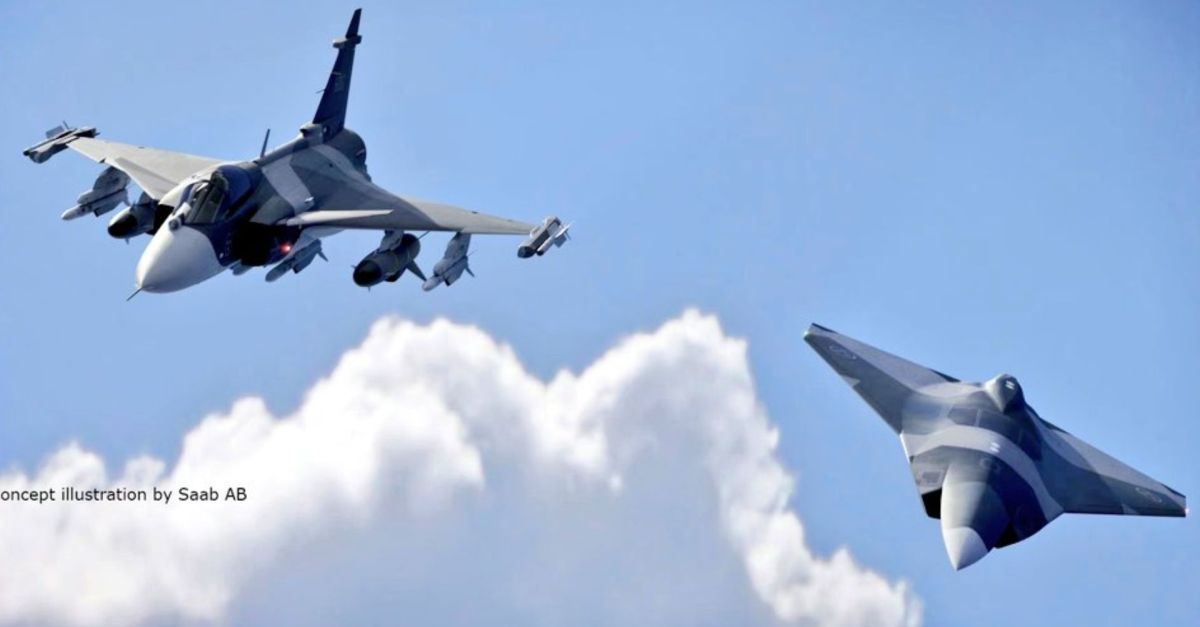Breaking news
Details on Swedish Futur fighter Jet just unveiled by SAAB.
In an era of rapid technological progress and geopolitical uncertainty, Sweden is sending a strong signal: with the Future Combat Aircraft Concept (Koncept för Framtida Stridsflyg, KFS), Swedish defense company Saab is unveiling the first glimpses of the future of the country’s air defense. The independent project, which began in July 2023 and is expected to continue until 2025, was recently presented during a press conference at Saab’s headquarters in Linköping.
Follow Army Recognition on Google News at this link

Saab's concept of UAV -fighter jet mixed patrol, this ambition is the development basis of KFS program (Picture source: Saab)
The KFS project clearly stands apart from the British-led Global Combat Air Program (GCAP). Initially, Sweden was part of Team Tempest, a consortium with Italy and the UK studying the requirements for a sixth-generation fighter aircraft. However, with the project's integration into the Japanese FX program and its renaming to GCAP in December 2022, Sweden decided to follow its own path.
Peter Nilsson, head of advanced programs at Saab, explained the context of this decision: “With everything that has happened, the war in Ukraine, joining NATO, and the increase in the defense budget, Sweden decided to take a deep breath and see where we are going," Nilsson was quoted as saying by Flight Global. This strategic reassessment underscores Sweden's commitment to developing its defense capabilities independently and tailored to its own needs.
Technological Innovation and Strategic Priorities
The new concept for the future combat aircraft will be very different from previous models like the Gripen. Nilsson indicated that the project will focus on low observability, autonomy, and electronic warfare capabilities. These priorities reflect the evolving requirements and threat scenarios faced by modern air forces.
A significant milestone in this direction was the order Saab received from the Swedish Defense Materiel Administration (FMV) in March 2024. It includes studies on both manned and unmanned solutions for various systems, technological developments, and demonstrators. This comprehensive approach aims to ensure that Sweden continues to have a cutting-edge and effective air defense in the future.
Geopolitical Implications and National Security
The decision to pursue an independent air defense project is significant not only technologically but also geopolitically. The war in Ukraine and growing tensions in Europe have led Sweden to rethink its defense strategy. By joining NATO, the country has committed to contributing to collective security, which places additional demands on its national defense infrastructure.
Furthermore, the increase in the Swedish defense budget reflects the seriousness of the situation and the need to respond quickly and effectively to new threats. The KFS project is a crucial element of this strategy and demonstrates Sweden’s commitment to independently modernizing and strengthening its military capabilities.
Saab’s KFS project marks an important step in the future development of Swedish air defense. By focusing on low observability, autonomy, and electronic warfare capabilities, Sweden will be able to adequately respond to modern threats and strengthen its defense capacity. The strategic decision to leave the GCAP and pursue an independent project underscores Sweden's commitment to independence and technological excellence. With an ambitious timeline and substantial resources invested in the project, Sweden ensures that it will continue to play a leading role in the field of air defense in the future.


























